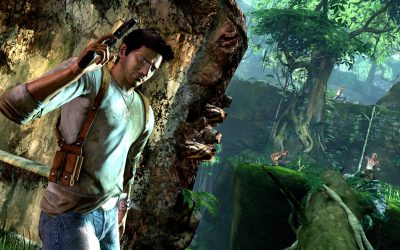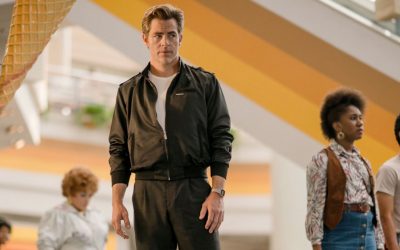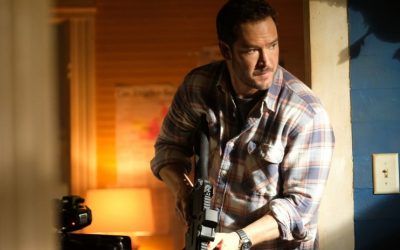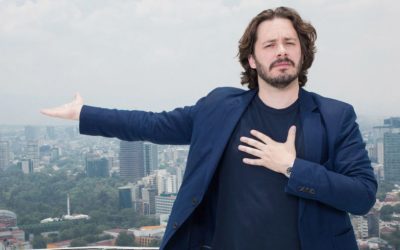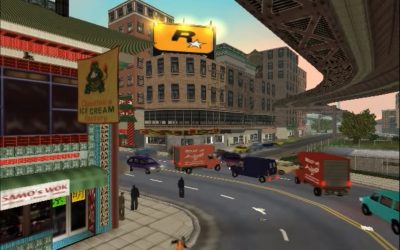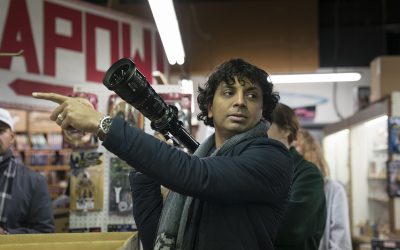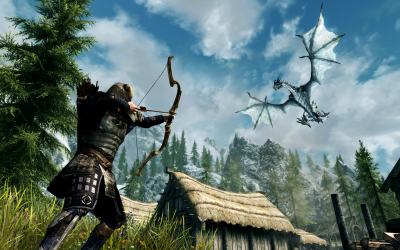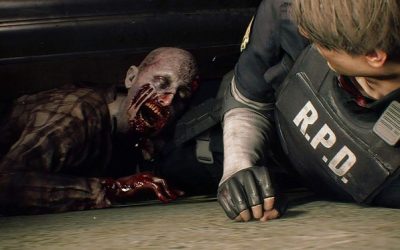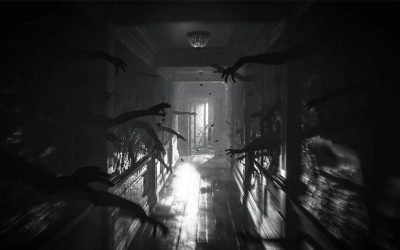
How Gears Of War “changed everything” for Uncharted’s gameplay
Gears Of War came out while the first Uncharted was still in development, leading Naughty Dog to a total revamp…
Here’s an eye-opening example of how one game’s release can have a huge knock-on effect on another title’s development. To set the scene, cast your mind back to November 2006, when Gears Of War was released by Epic Games while Naughty Dog was hard at work on Uncharted: Drake’s Fortune (which came out a year later).
Both games are now regarded as classics in the somewhat crowded era of gunplay-heavy action-adventure titles that we now live in, but back in 2006, both of these projects were treading relatively fresh ground on a new generation of consoles. And, as we’re now learning, Gears Of War‘s release had a major impact on what Naughty Dog were plotting for Uncharted.
Let’s leave it to one of the people involved to explain it in their own words…
“One of the cool things about Uncharted 1 is, we had no f***ing idea what we were doing”, former Naugty Dog developer Lucas Pope has admitted in a new interview with Ars Technica. “Uncharted 1 was announced, and then Gears [of War] came out. And Gears invented the modern third-person shooter. Suddenly, Gears came out and showed them how to do it. So we changed everything, six months before release.”
Following the release of Gears Of War, basically, Uncharted was on the receiving end of a huge overhaul: the camera perspective, the gun-based controls and the general movement mechanics were all rejigged to make a third-person feel akin to Gears Of War. Before Gears inspired this revamp, it seems, you would’ve seen Uncharted adopting a framed-from-behind sort of style more like the classic Lara Croft titles.
To change all that, apparently six months prior to release, and still end up with a cohesive game that players quickly fell in love with is no small feat whatsoever. It’s a heck of an achievement, in fact, which makes that first Uncharted game feel even more impressive.
We’ll bring you more gaming news as we see it.
Wonder Woman 1984: Steve’s return “incredibly important” to the story
Patty Jenkins has been chatting about bringing Chris Pine back for Wonder Woman 1984…
Spoilers ahead for Wonder Woman, if you’ve not seen it yet…
The biggest dangling question about the sequel to Warner Bros. and DC’s smash hit 2017 comic book effort Wonder Woman is still ‘how the hell is Chris Pine in it?’ Diana’s brave WWI pilot love interest Steve Trevor kicked the bucket rather firmly at the end of the first film, and yet the publicity for Wonder Woman 1984 has been very upfront about showing the character’s return, in a bumbag no less.
In a new interview with AM To DM, director Patty Jenkins has confirmed that she was planning to bring back Pine in the midst of mulling ideas for the sequel, and before the first film was even finished.
“I thought of what this next movie should be in the middle of making the first movie, so it wasn’t a solution to ‘Oh, that worked out, let’s try to jam [Pine] in there.’ It’s all incredibly important to the story,” she explained. “It makes perfect sense, that’s all I can tell you.”
And don’t let the ‘bumbag and shoulder pads’ aesthetic from what we’ve seen so far of the film fool you – apparently, Wonder Woman 1984 will be taking its 80s setting quite seriously:
“I really felt like the 1980s was mankind at their most extreme and at their best. It was when we could do anything we wanted and we had no idea of the price yet. So we have really committed to that version of the 80s. It’s not a bunch of jokes. It’s actually the most kind of aspirational and elegant version of the 80s in many places. And then you kind of throw it away and get used to it. I enjoyed rolling around in remembering what it was like when we had no idea it was going to stop.”
You can see the full interview below…
Wonder Woman 1984 was recently pushed back to 5th June 2020. You can read a complete guide to everything we know about the film right here.
In the meantime, Jenkins and Pine have been working together on a new TV series, I Am The Night, which gets underway on 28th January in the US on TNT.
The Last Kingdom: what next for series 4?
Louisa Mellor
Jan 23, 2019
The Last Kingdom has been renewed for series 4. What might fans expect to see from Uhtred and the gang?
Warning: contains spoilers for The Last Kingdom series one – three. See re…
The Passage episode 2 review: You Owe Me A Unicorn
After a decent series premiere, The Passage picks up the pace in its second outing. Here’s our review of You Owe Me A Unicorn…
This review contains spoilers.
1.2 You Owe Me A Unicorn
The Passage series premiere was pretty good, despite feeling a bit disjointed, a patched-together pilot from two directors. It also felt a little paint-by-the-numbers formulaic as it set the table for quite a few plot threads – including the end of the world. In the age of binge-worthy programming and HBO-level budgets, The Passage‘s opening hour felt very ‘network’ (and sounded like it, too. Who can forget “Holy dammit!”).
Still, there was potential, thanks to the relationship building between agent Brad Wolgast (Mark-Paul Gosselaar) and Amy Belafonte (Saniyya Sidney), the young girl he is sent to kidnap for the shadowy government operation Project Noah. Episode two, You Owe Me A Unicorn is a step up, with a cohesive tone and does more to flesh out its other characters, while also introducing more horror and slowly setting up the vampires held captive at Noah as a growing threat.
Picking up from the end of the premiere, the episode begins with an injured Wolgast and Amy on the run from Richards (Vincent Piazza, who is not given anything much to work with character-wise). The duo ends up in a small town and briefly play a single dad-and-daughter routine to gain access to a school bus to snag its first aid kit. Amy turns out to be really good at being undercover, saying her “mom” ran off with a fitness instructor who has his own YouTube channel, and the comedic moment serves to reinforce the chemistry between the two.
After being introduced as kidnapper and kidnapped in the first episode and bonding super fast, Sidney and Gosselaar’s performance sells the connection. In a scene reminiscent of 2017’s Logan, Wolgast starts to pass out from his bullet wound while driving and Amy is left wondering if he’s going to live. She understandably freaks out a little and calls his ex Lila (Emmanuelle Chriqui), who walks her through reviving him. The pair then makes a pact: “You don’t leave me, I don’t leave you” – which is put to the test by episode’s end when Richards finally catches up with them at a safe house owned by Lacy, a former nun, and Wolgast’s Navy instructor.
The sequence at Lacy’s house offers the characters a much-needed moment to breathe – while also exploring Wolgast’s backstory (We get it: he lost his own child and is now trying to make up for it) – but the TV logic falters a bit. Wolgast doesn’t alter his plan despite knowing the cell Amy used to call Lila can pinpoint their location for Richards. And Lila, who is being watched, shows up at Lacy’s as well. Lacy is a dead-too-soon mentor character, but the showdown at Lacy’s moves the plot along. Wolgast tries to sacrifice himself to ensure Amy’s escape, but she instead surrenders. The episode ends with both packed up to be shipped to the Noah base in Colorado (while Lila presumably escapes).
Meanwhile, back at Noah HQ, the global avian flu is in high gear, but Dr. Jonas Lear (Henry Ian Cusick) is encouraging Dr. Major Nichole Sykes (Caroline Chikezie) to reconsider bringing in Amy to use as their test subject (if you’ll recall, Project Noah decided it needed a young test subject to inject with the vampire/viral serum to create a cure for the flu).
Through a series of flashbacks, we learn Lear is a haunted man. His wife suffered from early onset Alzheimers and he viewed the trip to Bolivia (from the pilot) as a way to heal her and put an end to all diseases. To fund the trip, he teamed with his old friend Tim Fanning (Jamie McShane), a celebrity neurologist with a big ego. It just so happens the Department of Defense is the one offering up the most money, and despite his ailing wife’s objections, Lear agrees to partner with the military for the trip.
Cusick (Lost) is typically an enjoyable presence on screen and his Lear is the guilt-ridden voice of conscience in The Passage. His interactions with Carter (McKinley Belcher III) – one of “The Twelve” death row prisoners turned human guinea pigs – is interesting, but Lear is not an especially exciting character to watch just yet.
However, the flashbacks do quite a bit to flesh out Fanning. He is shown to be arrogant and more interested in fame and fortune from a potential “cure for everything” rather than guided by a moral compass. He is not a complete monster (yet). Fanning seems to be taken aback when he learns of Lear’s wife’s illness, and lest we forget, he was the one who stupidly rushed in to save the sick man/alpha vampire in the pilot. Of course, that’s how we get vampires, kids, and how Fanning became Patient Zero/Daddy Blood Sucker.
Vampire Fanning, along with Babcock (Brianne Howey), has a lot to chew on in this episode. After Carter undergoes the process that will slowly transform him into a viral vamp, he has an out-of-body encounter in which a human-appearing Fanning and Babcock lure him into a creepy bar (because the Overlook Hotel can’t have the only creepy bar in Colorado) to seduce and threaten. Seemingly acting as his Number Two, Babcock extracts a tooth from Carter, who is reluctant to throw in with their ranks (so we can expect him to be the “good” vampire?).
The Passage also delivers some light gore, with a horror scene where Babcock gets to feed on a creeper maintenance worker who is just asking for it. It is a good bait-and-switch jump scare moment that you can see coming a mile away, but is still satisfying to watch the bully become dinner while the meek and destined patsy Grey (Jason Fuchs) avoids the bite. The patricidal vampire Babcock is scary and cunning, and Howey’s movements and lupine gaze make the character especially unsettling.
Two episodes in, The Passage shows promise. At the very least, there is enough here to hold my interest until the next episode. The characters are gelling, and Fanning and Babcock are juicy villains in the making. The sooner they begin bringing people together at Project Noah, the better. The Passage is not edge-of-the-seat entertainment as of yet, but it is engaging enough for a weeknight watch.
The Passage continues on Tuesdays at 9pm on FOX UK
Edgar Wright reveals first details about his new movie
It’ll be a pure horror flick, set in London…
Empire has got an exclusive about Edgar Wright’s new film in the latest issue. The magazine has helpfully shared some details about the as-yet-untitled movie, a horror project set in London. There won’t be many laughs in this one, though, as it’s said to be psychological thriller in the same vein as Don’t Look Now and Repulsion.
“I realised I had never made a film about central London – specifically Soho, somewhere I’ve spent a huge amount of time in the last 25 years,” Wright explained to the mag. “With Hot Fuzz and Shaun Of The Dead you make movies about places you’ve lived in. This movie is about the London I’ve existed in.”
The Cornetto Trilogy and Baby Driver director is penning the screenplay, which has a female lead, with ex-Penny Dreadful staff writer Krysty Wilson-Cairns. Wilson-Cairns was recently linked to Sam Mendes’ script for 1917, and also appears to have written her own IMDb bio. We share part of it here for no other reason than our life-long love affair with research trivia:
Krysty Wilson-Cairns trained at the National Film and Television School, London. She loves screenwriting, storytelling and writing about herself in the third person.
Born and raised in Glasgow, Krysty has told stories for many years, but they were often to do with what happened to her Mother’s gin and why the dog is wearing a polo neck. Finally she found a productive outlet for her storytelling in the form of filmmaking and spent her formative years writing sketches and short films to shoot with friends.
If she did indeed write this, she may be our new favourite person.
News of Wright’s new flick comes after he revealed to /Film last November that he’d talked to John Landis “years ago” about helming a remake of American Werewolf In London, long before the original director’s son, M** L*****, was involved:
“There was no script, just the idea of doing it. John [Landis], whom I love, asked me and I said it’s a perfect movie as far as I’m concerned, and I have nothing to add to it.”
More details on this new film will hopefully be along shortly, as it’s set to begin production this summer, presumably in the UK.
Grand Theft Auto 3 mod restores original version of game
There’s a version of Grand Theft Auto 3 you’ve never played that a new mod recreates.
A group of modders are trying to recreate a version of Grand Theft Auto III that never quite was.
When Grand Theft Auto III was first showcased, the game looked a little different. It wasn’t necessarily a huge difference, but the overall game looked a little more cartoonish with its brighter colours and more exaggerated characters. Many say that it was spiritually closer to the original Grand Theft Auto games from a visual perspective. These changes extended to the look of certain areas on the game’s first island. There were also a few things (noticeably the branding of the game’s police cars) that were altered following the 9/11 attacks.
There were other changes that were either removed because of developer choice or other limitations (such as a radio that cuts out in certain ranges and the ability to pay to heal your character), but the point is that the Grand Theft Auto III we first saw was different from the GTA III we eventually got.
This new mod aims to restore many of those changes. Currently referred to as GTA 3D, the idea behind this mod is to alter Grand Theft Auto III‘s PC version so that it looks and plays like the GTA III that many refer to as the game’s beta. This isn’t necessarily the first time that someone has tried this, but the 12-person team helming this particular mod have gone further than most in terms of implementing alterations that are even just hinted at by the game’s code. This extends to changes such as modified vehicle handling.
There’s quite a bit of work present even in the early version of this mod, which is especially impressive when you consider that the original version of GTA III wasn’t really all that different from the version of the game we eventually got. With the possible exception of the changes made due to 9/11, there isn’t even much indication that the things removed from the game were things that the developers desired to put into the game in the first place.
There’s no word on when this project will be finished, but it will certainly be interesting to play this original version of the game and see just how different it really is.
M Night Shyamalan interview: ‘I feel very connected to Mr Glass’
The Unbreakable and Split director talks about finishing off his ‘grounded’ superhero trilogy by ‘not going where the Marvel movie would go’
It’s been a long road to the big screen for Glass, the third – and, if the director is to be believed, final – movie in M. Night Shyamalan’s surprise superhero trilogy. Nineteen years, in fact. Not that we knew it… Despite mumblings of follow-ups from star Bruce Willis and co over the years, most of us assumed that 2000’s Unbreakable was destined to be a one-off cult classic.
Of course, that was until Shyamalan’s Split – a thriller centred around James McAvoy’s multifaceted serial killer, Kevin Wendell Crumb – made its big reveal: an unexpected epilogue that placed the film in the Unbreakable universe.
After Split’s success at the box office, Shyamalan finally had his chance to complete his story with Glass: a crossover event that sees McAvoy’s ‘The Horde’ (as he’s now known) and Willis’ David Dunn (aka ‘The Overseer’) go head-to-head, with Samuel L Jackson’s sinister puppet-master Mr Glass – a comic-book obsessive with a genius-level intellect – pulling the strings.
With Shyamalan’s trilogy now complete, Den of Geek sat down with the director to talk about his vision for Glass, the changes in the movie landscape over the last 20 years and whether he’s really done with his “grounded” superhero franchise…
A lot has changed since Unbreakable was released almost 20 years ago – superhero movies are now a mainstay of popular cinema, as opposed to a risky prospect. Did that change give you the impetus to finish your trilogy?
The fact that comic-book movies are prolific now helped in terms of getting the movie to be accepted by the system. But that wasn’t related to why I got interested in making this series again. I became interested again because the accepted tone of cinema has changed in my favour; in favour of my tastes.
In Unbreakable, the weirdness and the darkness of where I wanted to go was much less comfortable for audiences. Take the dance sequence in Split, for example, where Hedwig [one of Crumb’s 24 personalities who manifests as a nine-year-old boy] is dancing for Casey [played by Anya Taylor-Joy]. In 2000, that might have been too weird for an audience, like, “That’s stupid…Is this supposed to be funny?” It would have been seen as a negative. But by the time Split came out, people were laughing and scared. It’s disturbing.
That tone has allowed me to finish the series in the way I was hoping to. I can be very dark and very weird, and it wouldn’t just be laughed at. Just because something’s an oddity, it’s not necessarily wrong anymore. You know, what was too weird with Kubrick and Lynch would be more accepted today, in my opinion. So that’s the real exciting movement in the marketplace. I saw that become mainstream and I’m like, “OK, let me get back in there.”
For a superhero tale, you have two aces up your sleeve in that you have two very strong villains. Let’s start with The Horde – James really seems to up the ante this time around…
I feel that James has given the performance of the year. I felt he did it last time [with Split], and he did it even more this time. He just has all the attributes that we needed for someone to play Kevin Wendell Crumb and his 24 personalities. The biggest one was empathy – he can make you feel emotional for every single one of those personalities. That’s an amazing thing.
And then to be a physical actor at the scale that he had to, to change calibrations so slightly to be able to play a child, a woman, a beast… It’s incredible. I think he and I grew into it over the course of Split and then into Glass. We grew into what we were creating together. But he’s the perfect person for it. I mean good or bad, I think he’ll forever be known for playing Kevin.
And then you’ve got Samuel L Jackson returning as Mr Glass, the film’s sort-of omniscient narrator. What did he bring to the role this time around?
I love him. A lot of people have asked me, “Is he [Mr Glass] you?” And I do feel that way. I feel very connected to the character. When I was writing the movie, I told Sam, “I’m so enjoying writing your character.” Because he’s narrating his own story structure.
Sam is a very smart guy. You’ve got Mr Glass, who’s an expert on pop culture, and then Sam Jackson, who is pop culture. Again, he’s exactly the right person to play Mr Glass. You know, Sam knows everything about Korean movies or this or that – you name it, he knows it… and he’s not bullshitting. He really lives graphic novels and really thinks about them.
Him playing this role has taken on an even more interesting, almost meta spin since Unbreakable, now that he’s so well known for playing Nick Fury in the Marvel Universe…
Yeah. In all those pieces, he’s a side character – you know, he’s kind of peripheral. And for me, Mr Glass is really the central character of all these three movies, presenting his thesis about how things are going to go and how there’s a higher order of things.
That’s how Mr Glass and I are really connected: I do think there is a bigger picture and that we’re all part of it. Not in a religious way – I’m the opposite of religion – but that everybody has some connection to this bigger picture.
The final part of the triptych is Bruce Willis – how was it working with him again after all these years?
He was so into it and so positive. He came to Philly [Philadelphia, where the movie was filmed and is set] even when he wasn’t shooting; he would just hang out and be with us and watch the other guys shoot. He just wanted to live in the world that we were in.
I wanted to bring out a more fatherly part of him this time around. Also this sense of being tired, maybe because he’s been a superstar since Moonlighting. It’s like his character, David Dunn, in the sense that he’s been this icon for so long, like a kind of weariness.
The effects in the film are almost defiantly in-camera, with not a lot of obvious CGI. Was that a deliberate choice?
Yeah. It’s important because my brain doesn’t work in that other way. For whatever reason when I’m working on a computer screen, it’s different. I like to be standing there, directing things on set. Very minimal. We knew we were going to have to go do battle against Marvel. We had to go do battle in the way that Marvel does battle around the world, but with only one-thirtieth of the budget. And I love it. But our strength is not in excess. I’m not going to out-Avengers the Avengers, you know – like the big camera pans across the buildings. Really, this is a movie that keeps talking about where the Marvel movie would go. And then doesn’t go there.
The use of colour in the film is really striking. What was the thinking behind that?
Colours are such a huge thing to me in terms of telling a story. In this trilogy, primary colours are really important – they represent the comic-book world. The base world is very monochromatic, like in Unbreakable, and then you start to see more colour at the same time as the characters become more self-aware.
David’s colour is green, which is traditionally a life-giving colour, so it felt very much like the protector of life. The ochre or mustard colour for The Horde comes from a spiritual colour that’s used in Hindu ceremonies, like monks’ robes. It’s usually tied into spiritual endeavours. And so the reason I did that was because I felt like The Beast [Kevin’s super-powered personality] was an evangelist, who has come to say that those people who’ve been through trauma are not lesser, and so he represents kind of healing them with a different point of view. And then purple has traditionally been associated with nobility and majesty and royalty. Mr Glass thinks of himself as royalty in this world.
When you see the color palette in the movie like the pink room where they’re doing therapy – that’s essentially those strong colours fading to white. And that’s the room where you stop believing in the extraordinary. And so the colours of Sarah Paulson’s character [a psychiatrist specialising in superhuman “delusions”] and any of the hospital colours are very washed out – very pale blues and greys and whites. That’s where you’re going to the “ordinary”.
This feels like a pretty definitive ending, but is there any situation where you could see yourself returning to the franchise?
I think it’s done. I don’t want to ever say never, but I don’t think so, because I just want to go on and tell other stories and be an original filmmaker.
The idea of doing a sequel to this has always kind of turned me off a little bit. Not like it’s cheating, but there’s something inorganic about it. You know, like: “We had a great date last week. Do you want to go to the exact same restaurant again this week?” Weird. I like that sense of trying to have a new relationship each time and it’s fun and scary. So two weeks from now I’m going to start writing a new movie that has nothing to do with it.
Glass is out in cinemas now
Skyrim Together mod adds multiplayer to game
Matthew Byrd
Jan 21, 2019
Skyrim gets an unofficial multiplayer mode in the Skyrim Together mod.
If Elder Scrolls Online didn’t satisfy your urge to play Skyrim with friends, this ambitious new PC mod might jus…
Resident Evil 2 remake review: a gory and glorious reanimation
Resident Evil 2 is revived in stunning style, with a near-perfect remake that balances fan service with fresh scares…
Resident Evil 2 sets its stall out early, with a gloriously gory moment that establishes the tone: as you will have experienc…
Layers Of Fear 2 teaser trailer released
Matthew Byrd
Jan 21, 2019
Layers Of Fear 2 dives into the horror of cinema history with this new trailer.
New footage of the next Layers Of Fear game suggests it will be as creepy and memorable as its predeces…

